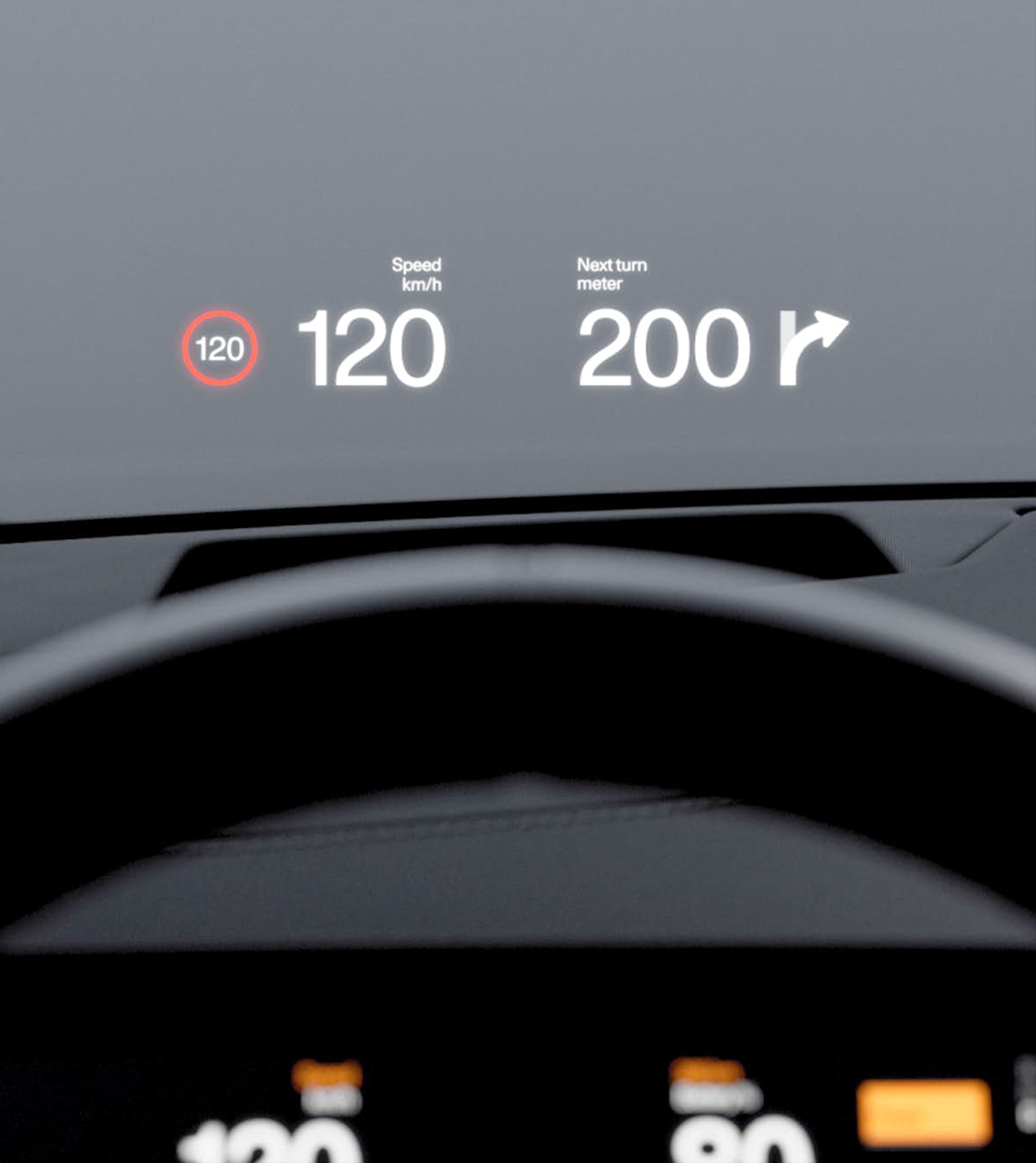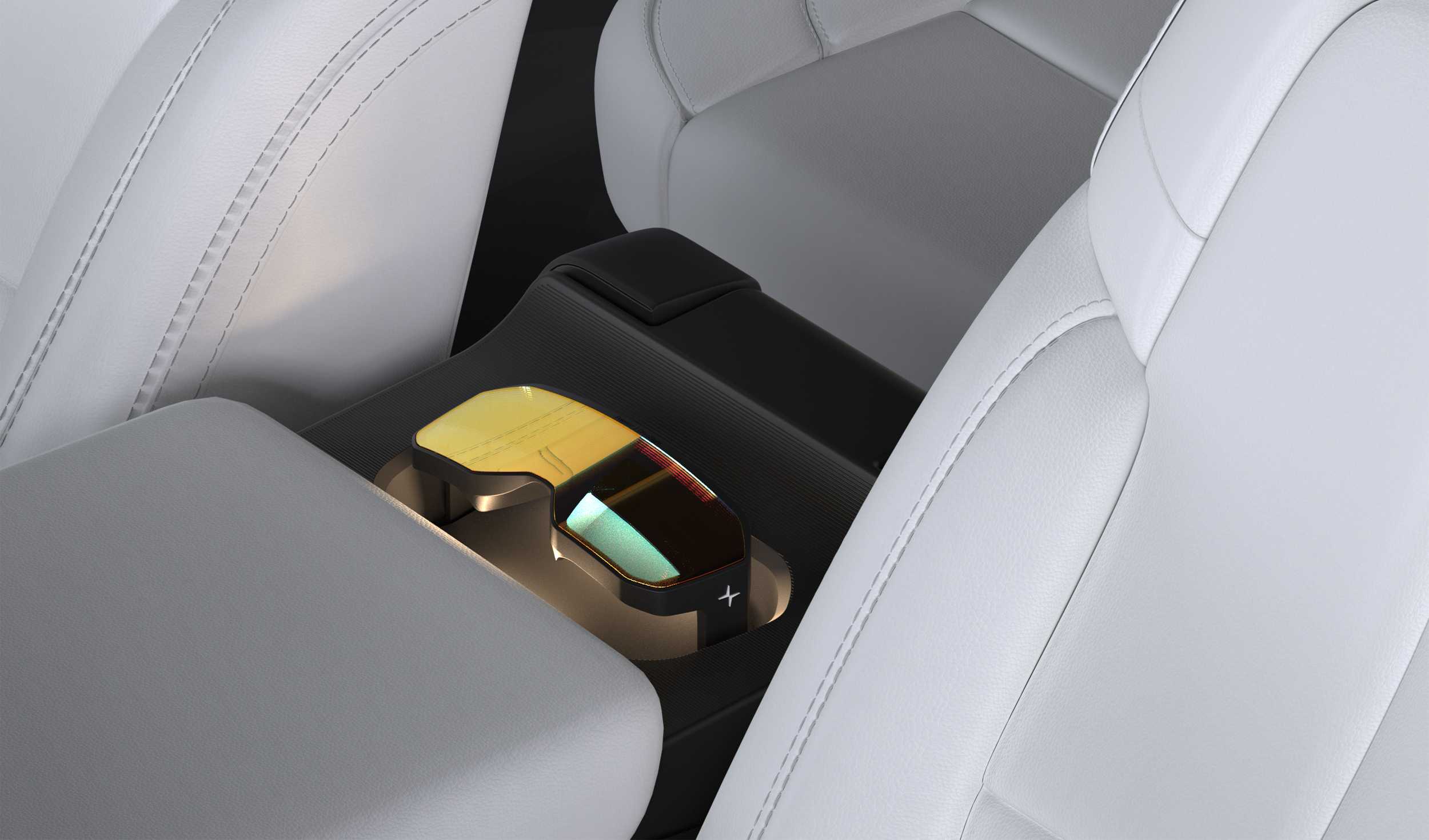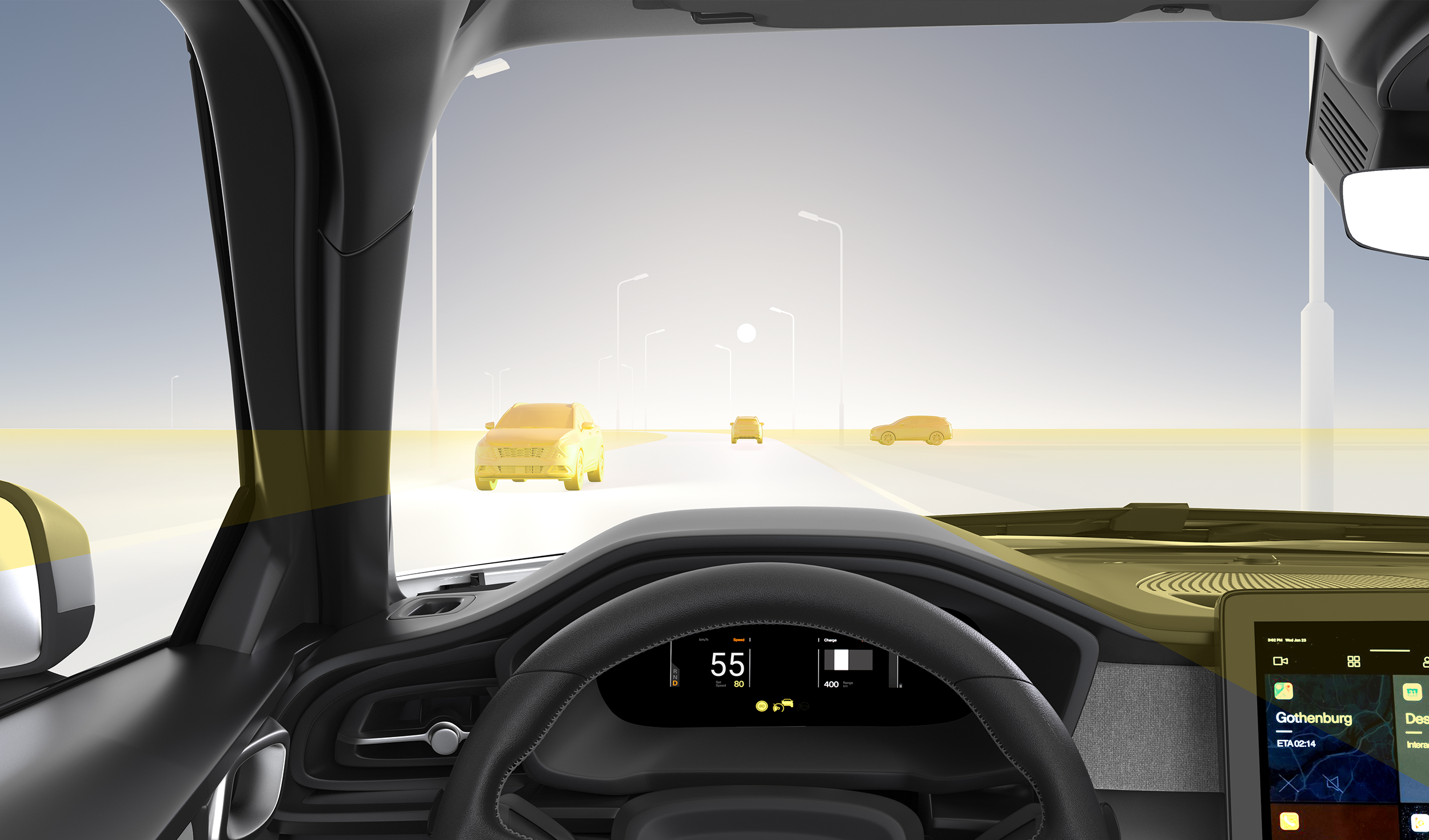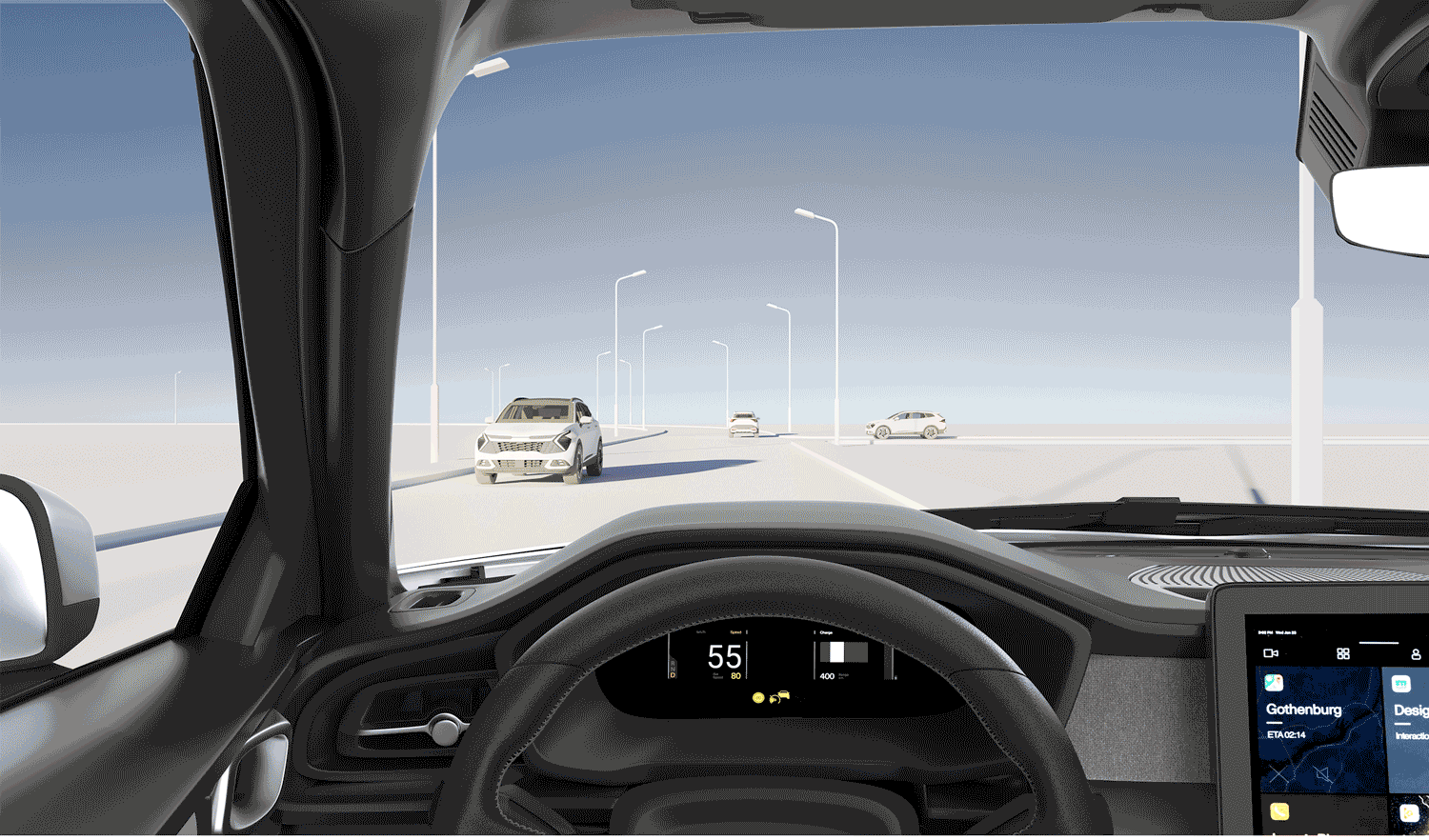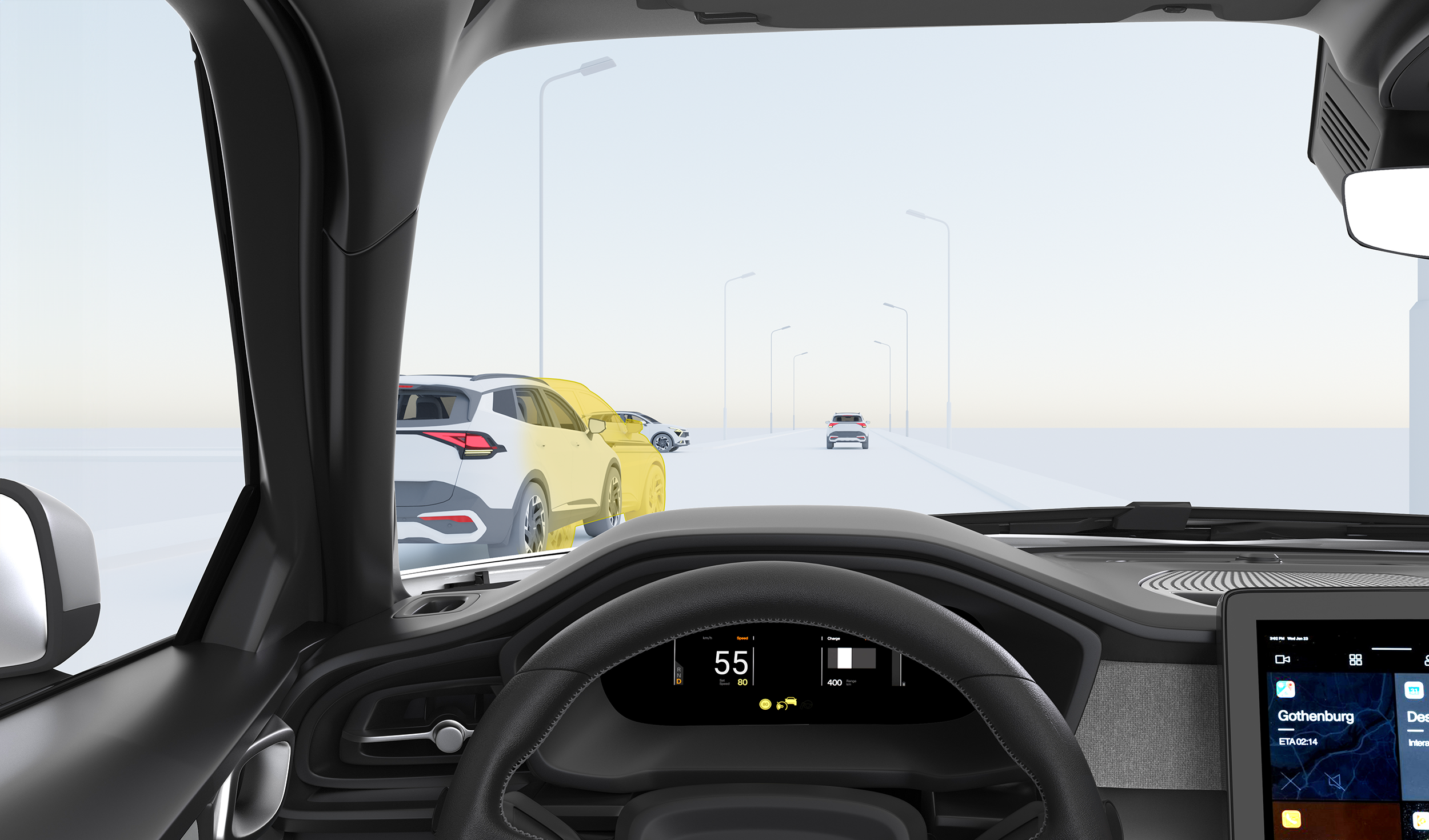
From Sunglasses
to Smartglasses
The driverless tech ready to help drivers see more and stay one step ahead of other road users.
Whilst we are still a long way off fully autonomous cars, Matthew Cockerill and Carsten Eriksen believe driverless technologies with dedicated smart glasses for your car could deliver more comfortable and safer driving experiences today.
The smart glasses powered by the capabilities of autonomous tech within modern cars could enhance the view of the world and other road users around the driver. Rather than simply displaying existing screen based information from the vehicle or drivers smart phone as other concepts tend to do.
Today's more advanced cars help drivers with low levels of autonomy. Through driver assist and partial driving automation features like adaptive cruise control, autonomous emergency braking to park assist. Or provide information through a head up display (HUD) from the vehicle ( speed, distance to next turn, fuel levels etc) or our smartphones (incoming calls/messages, music selection, etc) to keep our eyes on the road.
Park assist provides a rear view and guidelines for the driver.
Head up display of existing vehicle & smartphone information.
Whilst car companies are exploring augmented reality in their concept cars, they tend to augment your view with visualisations of screen based information. From BMW's i Vision DEE concept car that utilises the entire windscreen as a screen for different levels of augmented reality. To Audi's Activesphere Concept utilising Magic Leap's AR glasses to view the real environment whilst simultaneously displaying 3D content and interactive elements. These concepts are some way off making their way into production vehicles. And often more focused on create a wow factor as equity plays at trade shows and press briefings rather than focus on relatable day to day driving experiences.
BMW’s full windscreen display concept.
Audi's Activesphere Concept enabled with Magic Leap glasses.
Matthew and Carsten started with the driver not the tech. Understanding that since the birth of the motor car, drivers have used sunglasses to improve their vision. By reducing glare from the sun and reflected surfaces and enhancing contrast and depth perception to discern objects more easily in low light conditions. They have imagined dedicated smart glasses for the car. Stored within the central console and tightly integrated with its vision systems - from sensing, on board compute to perception, planning and control. To bring more immediate and relatable utility and benefits by enhancing drivers vision in three ways.
Clear Vision
Seeing more in difficult driving conditions.
The smart drivers glasses are able to locally dim regions of the lens based on the direction and intensity of light utilising an in-lens transparent display. Providing shade just where it is needed, from the sun during the day and modern car headlights and rear brake lights at night to provide a clearer view and comfortable drive. This in-lens display also helps augmented elements stand out more clearly with the additive light field display used to provide the augmented reality glasses for real world driving conditions.
In low visibility like fog or at night it is harder to pick out other road users, road edges and markings. So the smart driver glasses utilise the cars cameras and other sensors to detect these and colourise the important road users, road edges and the horizon in real time. Not only through the windscreen but even extending into the cabin to help the driver stay orientated.
Wider Vision
Increasing the field of view to see other road users.
Blind spots in mirrors can mean you can miss quickly approaching road users like cyclists in the lanes closest to the car. So traditionally we need to look over our shoulder to check our blind spots before making a manoeuvre. Some advanced cars do provide a visual alert on the wing mirror of other road users entering your blind spots. But with these smart driver glasses, digital content visually extends the field of view of the mirror. Revealing the cyclist or other road users at your side. Augmenting it in this case with a live video feed of the cyclist in the blind spot taken from the cars 360 cameras. Helping to be aware of your immediate surroundings and giving you more confidence to change lanes or take a turn.
Prescient Vision
Anticipating other road users actions.
The actions of cars and other road users can be unpredictable and disconcerting. From a car pulling out from a junction, to a cyclist turning across our path unexpectedly. Turn signals and brake lights help us to anticipate changes in direction or speed but only if they are used. Whilst existing driver advanced systems can provide forward collision warning and autonomous emergency breaking, they don't address the discomfort from the driver of more minor unexpected changes in other road users behaviours.
So the system utilises the inward looking sensors on the car (brakes, gears, steering, acceleration) to understands your driving behaviour and outward looking sensors (radar, LiDAR and cameras) to understand the behaviour of other road users around you. This data is used to calculate the motion of each and predict movement change just happening before it is visible by the driver. The smart driver displays the future position as a shadow of the future vehicle position of relevant road users to your path, seconds ahead of time. Giving you more time to determine a smoother, less stressful course of action for safer driver driving.
Conclusions
By starting with the driver's perspective, these smart glasses, integrated with the vehicle's vision system, aim to enhance vision and perception in various driving scenarios. Providing clearer vision by reducing glare, highlighting crucial road elements, widening the field of view and predict the movements of other road users. This concept is not a solved product ready to ship. But seeks to open up thinking on how digital content might augment our view of the world in the future. Where the physical and the digital are more intimately connected. Enhancing elements of the real world to provide relatable benefits for today’s users.
The emerging technologies of autonomy and smart glasses promise not only to improve safety today, elevate the comfort and confidence of drivers on the road, but become a bridge between traditional driving and future autonomy.
About Us
If you’ve made it this far, you must be curious about us.
Matthew is an independent innovation consultant. With original blue sky thinking tied to pragmatic and directional design outcomes. To help clients uncover future opportunity and gain the strategic lessons to inform their planning and design execution today.
Carsten Eriksen is founder and CEO of at Swift Creatives. A design studio based in Aarhus, Denmark. Thinking, shaping and crafting physical product and experiences that help start-ups and global brands stay ahead in highly competitive and disruptive markets.


